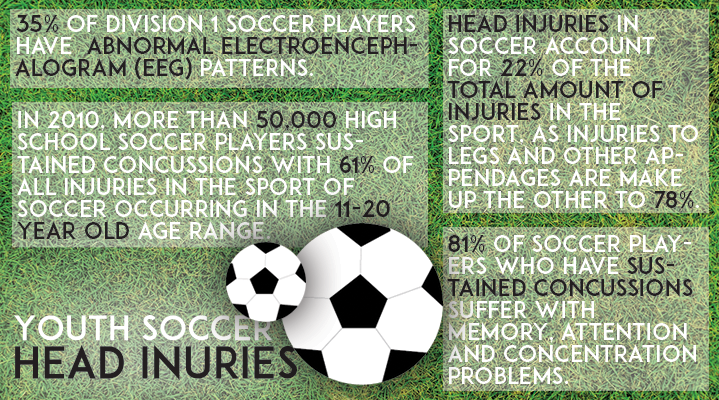Youth soccer headed in a new direction
December 1, 2015
Jamie Kimbrell
Staff Writer
@jaynicole2015
When watching or playing any game of soccer, you see athletes playing hard, using every part of their body to make themselves better, from head to foot. However, as a result of lawsuits and the increasing number of concussions among youth soccer players, the United States Soccer Federation passed a rule that states players under 11 years old can no longer head the ball, and players 11-13 years old can only head the ball in game.
The “Header” rule, debated in California courts, is an attempt to lower the injury rates and keep kids in the game. A parent group fought for this change after accusing soccer associations of disregarding head injuries, leading to the creation of the rule. U.S. Soccer designed the rule to keep youth soccer players safe in their crucial developmental years, a result of skyrocketing numbers of head injuries in the game.
In 2010, more than 50,000 high school soccer players sustained concussions with 61 percent of all injuries in the sport of soccer occurring in the 11-20 year old age range.
Heading the ball is a large part in directing the field and having the ability to protect yourself while making plays. For example, if a player was jumping to head the ball and another player was doing the same, having previous training for heading the ball might help protect players from the impact of the collision.
“Heading the ball is as much of a soccer game as being able to volley a ball or cross a ball,” Sting Soccer Club coach Melissa Garrett said.
Without developing players learning how to correctly head the ball, it may pose other threats to their health and safety in the game.
Implementing the rule initially was a good idea for the safety of players. However, the rule has also brought up concerns from parents and coaches who are wary of the benefits of U.S. Soccer’s rule.
“I think temporarily it will limit concussions in youth players but will increase concussions in older players as they won’t be practiced in the trade,” Garrett said, “I think this will impact the game and our younger players because we are creating a fear in completing an element of their game. They should feel confident in every aspect because they have been trained properly.”
As a soccer player who as sustained a concussion myself, learning the correct techniques to head the ball helps prevent ball to head injuries. From what I have observed, most head injuries in soccer come not from heading the ball, but from head to head collisions during games such as scoring off of a cross in the box.
I have played soccer and have been practicing headers since I was in grade school, without an injury until my later years of playing when the aerial competition increased. While I think the new rule is a good concussion prevention tactic for younger players, it may prove to damage the development of athletes as they develop and grow in the sport.
While the header rule may not seem as the most productive response to the rising number of concussions in youth soccer, U.S. Soccer has formed a solution to the problem hopeful to keep the future of American soccer safe.










